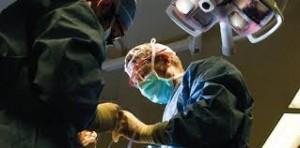Antithrombotic Therapy for Cerebrovascular Disorders: Cardiogenic Brain Embolus
 Cardiogenic Brain Embolus
Cardiogenic Brain Embolus
A cardiogenic brain embolus is a focal neurologic deficit attributed to an embolism originating from the heart.
Recommendations:
1. For the primary prevention of cardiogenic brain embolus, the reader is referred to the discussions of the causes of cardiac thrombi in the other chapters of this report.
2. For the prevention of recurrent thromboemboli to the brain, it is recommended that heparin followed by warfarin therapy, at a dose that prolongs the PT to an INR of 3.0-4.5 (1.5-2.0 times control using North American thromboplastin), be instituted in nonhypertensive patients with small to moderate-sized embolic strokes in whom a CT scan done 24 h or more after stroke onset documents the absence of spontaneous hemorrhagic transformation. read more
A. Anticoagulant therapy should be postponed several days in patients with large embolic strokes or severe hypertension (who are prone to late hemorrhagic transformation).
B. Anticoagulant therapy should be postponed 810 days in patients with embolic strokes complicated by hemorrhagic transformation.
C. If there have been no recurrences after 1 year of warfarin therapy at an INR of 3.0-4.5, the dose should be decreased to less than INR 2.0 to 3.0 (PT ratio 1.3 to 1.5) and continued indefinitely.
This grade C recommendation is based on level III, IV, and V evidence.
3. In native valve endocarditis, anticoagulants are not recommended for the primary prevention of stroke. If a cardiogenic brain embolus does occur, and if a CT scan confirms the absence of hemorrhagic transformation, the grade C recommendations for thromboemboli apply.
4. In mechanical prosthetic valve endocarditis, it is recommended that the prior anticoagulant therapy be continued. If a cardiogenic brain embolus does occur, it is recommended that anticoagulant therapy be stopped for 48 h and a CT scan and arteriography be performed. If the CT scan confirms the absence of hemorrhagic transformation and arteriography confirms the absence of mycotic aneurysm, the grade C recommendations for thromboemboli apply.
Category: Antithrombotic Therapy
Tags: antithrombotic therapy, cardioembolic source, cerebrovascular disorders